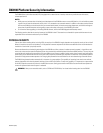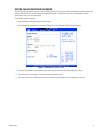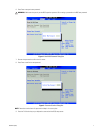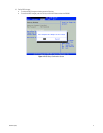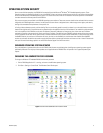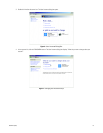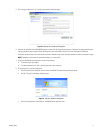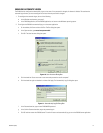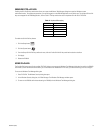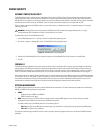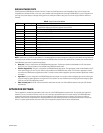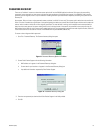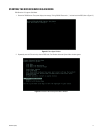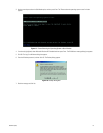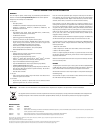
C2641M-C (7/09) 15
DX8100 NETWORK PORTS
Table B describes the DX8100 ports and their functions. The ports are classified either as user-changeable or fixed. You can assign a user-
changeable port a different number. In this case, a port’s number must be assigned within the range of 5000–65535. If a port is assigned out of
this range, the system displays a message alerting you that an invalid port number is being used. You cannot assign a different number to a
fixed port.
NOTE: Unless there is a conflict on your network, it is recommended that you do not change port numbers from their default settings. Make sure
any changes to port numbers are made consistently across all DX8100 servers and clients on a network.Client and server ports must be identical.
The DX8100 port functionality is summarized as follows:
• Base port: This port is configured at the DX8100 Network setup screen. The base port number is downloaded to the PC client system
during an IP scan. The port number can be modified at the DX8100 Site setup screen.
• Software Upgrade Port: This port is configured at the DX8100 Network setup screen. The upgrade port number is downloaded to the PC
client system during an IP scan. The port number can be modified at the DX8100 Site setup screen. The PC client’s upgrade port number
must match the DX8100 server’s upgrade port number. For server-to-server software upgrades, both server software upgrade port numbers
must match.
• Agent Port: This port is configured at the DX8100 Notification setup screen. You change the client emergency agent server listening port
using the Emergency Agent application running on the PC client system. For more information about changing the client emergency agent
listen port, see the Client Applications manual.
• Other reserved ports: Ports 256–1023 are reserved for well-known services. Ports 1024–4999 are temporal client ports (OS allocates
automatically).
APPLICATION SOFTWARE
The only application intended and guaranteed to work on the unit is the DX8100 application software itself. Do not install other application
software. If you do, this voids the warranty on the unit, and it also opens up potential holes in the system security. The DX8100 application
software has several user and group accounts with varying degrees of rights and permissions on the system. Each account is password-
protected. These accounts and passwords are completely different from the operating level account and password discussed in the previous
section. The typical system operator will have to work only with application program level user names and passwords.
Table B. Open Ports on the DX8100
PORT User-Changeable Function
80/tcp No HTTP (Hyper Text Transfer Protocol) forms the basis for Web page transfer over the Internet. Ports 1–255
are reserved for well-known services at network communication
135/tcp, udp No End Point Mapper (EPMAP), a Microsoft RPC locator service
137/tcp, udp No File/print sharing (NetBIOS name service)
1028/tcp No Remote Procedure Call (RPC)
1801/tcp No Message queuing
1900/udp No Universal plug-and-play (UPnP)
2103/tcp No Message queuing
2105/tcp No Message queuing/logon
2107/tcp No Message queuing
2869/tcp No UPnP
9002/tcp Yes DX8100 base port, used for transmission of video, audio, and interface data
9003/tcp Yes DX8100 software upgrade port, used for remote upgrade of DX8100 software
9005/tcp Yes DX8100 information port



